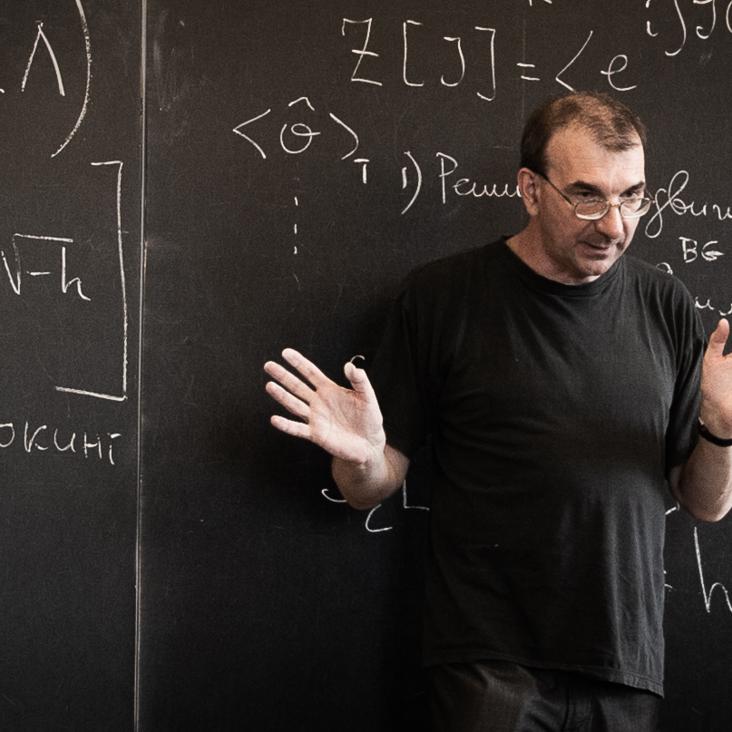Holographic spectral functions and diffusion constants for fundamental matter
Journal of High Energy Physics 2007:11 (2007)
Abstract:
The holographic dual of large-N c super-Yang-Mills coupled to a small number of flavours of fundamental matter, N f << N c, is described by N f probe D7-branes in the gravitational background of N c black D3-branes. This system undergoes a first order phase transition characterised by the 'melting' of the mesons. We study the high temperature phase in which the D7-branes extend through the black hole horizon. In this phase, we compute the spectral function for vector, scalar and pseudoscalar modes on the D7-brane probe. We also compute the diffusion constant for the flavour currents. © SISSA 2007.Holographic spectral functions and diffusion constants for fundamental matter
(2007)
Photon and dilepton production in supersymmetric Yang-Mills plasma
Journal of High Energy Physics 2006:12 (2006)
Abstract:
By weakly gauging one of the U(1) subgroups of the R-symmetry group, script N sign = 4 super-Yang-Mills theory can be coupled to electromagnetism, thus allowing a computation of photon production and related phenomena in a QCD-like non-Abelian plasma at both weak and strong coupling. We compute photon and dilepton emission rates from finite temperature script N sign = 4 supersymmetric Yang-Mills plasma both perturbatively at weak coupling to leading order, and non-perturbatively at strong coupling using the AdS/CFT duality conjecture. Comparison of the photo-emission spectra for script N sign = 4 plasma at weak coupling, script N sign = 4 plasma at strong coupling, and QCD at weak coupling reveals several systematic trends which we discuss. We also evaluate the electric conductivity of script N sign = 4 plasma in the strong coupling limit, and to leading-log order at weak coupling. Current-current spectral functions in the strongly coupled theory exhibit hydrodynamic peaks at small frequency, but otherwise show no structure which could be interpreted as well-defined thermal resonances in the high-temperature phase. © SISSA 2006.Photon and dilepton production in supersymmetric Yang-Mills plasma
(2006)


